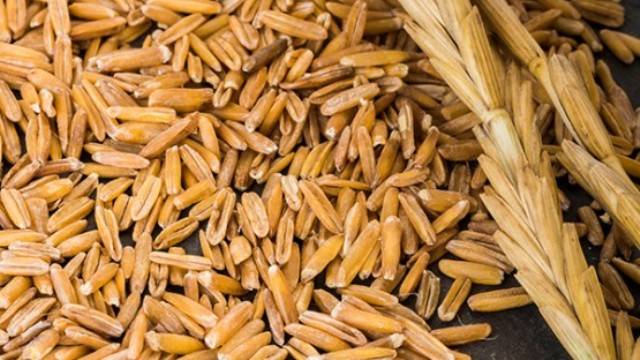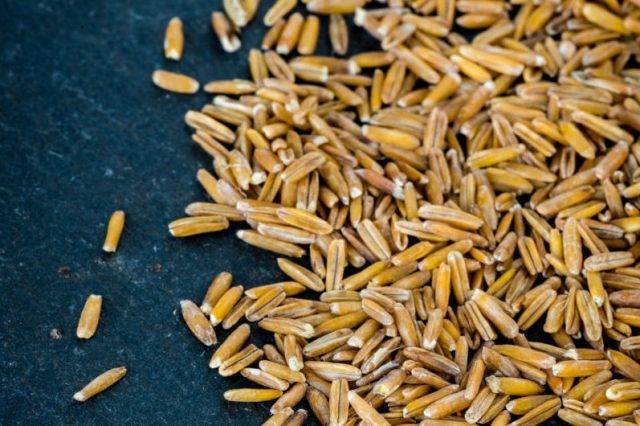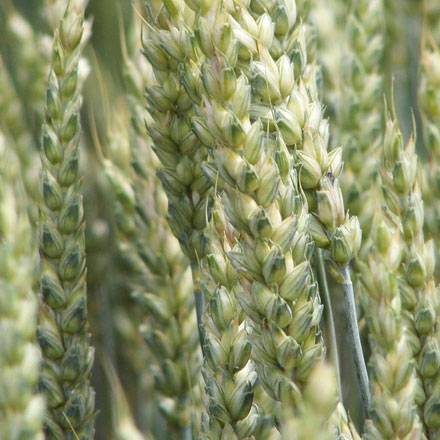
A crop that not only proved to be an alternative to wheat but its speciality lies in its nature to grow in the soil that does not require harvest which is usually the case with other crops. The plants real name is intermediate wheatgrass, but that struck people as kind of clunky, so they renamed it. It's a distant relative of regular wheat. It's never grown as a grain crop because it doesn't produce as much seed as wheat. But it is a perennial.

The creator of this crop is a plant breeder Lee DeHaan who has been working since past 15 years & cross-pollinating individual Kernza plants. He grows them in greenhouses and in open fields and selects the best offspring, paying particular attention to the size of the seeds they make. Bigger seeds means bigger harvest to the mill. "As you can see, the seed is pretty small. It's about one-fifth the size of wheat," he says.
But he has been making progress. These seeds are twice as large as when the project started. The Land Institute has recruited farmers to grow Kernza in small fields (small for the Midwest, at least) of 40 acres or so. They're harvesting it with standard farm machinery.

DeHaan recalls the day, years ago, when he realized that Kernza might be more than a long-term scientific experiment. He was visiting a farmer who'd grown a field of Kernza. The farmer had just finished his wheat harvest, and DeHaan asked if he'd be willing to try to harvest the Kernza field with his combine. "He was kind of skeptical, but he was willing to give it a shot," DeHaan recalls. "I'm riding with him in the combine, and it's starting to fill up his bin in the back. He was almost giddy; he was starting to giggle about it. He couldn't believe it was working." They ended up with almost a full semitrailer load of Kernza grain.

Companies like Cheerios and Wheaties say that they want to make cereal out of it. Many research firms are talking interest in the seed now as the R&D team saw this lovely grain and thought, 'There is something we can do with it,' says Maria Carolina Comings, marketing director for General Mills' organic brand, Cascadian Farm.

In recent months, General Mills gathered up all the Kernza grain that it could find, milled it, and made 6,000 small boxes of cereal to hand out as samples — and at events like the one this week in San Francisco.
The grain in sweet in taste and there's actually more regular wheat in this cereal than Kernza. The quality of this crop is that it grows like grass grass on the prairie, protecting the soil, taking carbon from the air and storing it in the earth so it can be made available in huge quantity which can be marketed by General Mills.
Cascadian Farm brand, Comings says. "We want to scale this and be able to find it on any grocery store, sitting on the same shelves" alongside every other cereal put out by General Mills. You can start to be part of the solution to climate change by eating a cereal, which is just so lovely."

The president of Land Institute Fred Lutzi, is recruiting farmers to grow larger quantities of Kernza, but they're telling people not to expect too much, too soon. "Commercial production of Kernza in 2019 is akin to taking a car for a test drive when it's halfway down the assembly line." For one thing, Kernza produces small harvests right now — perhaps 500 pounds per acre. By comparison, the average U.S. field of wheat yields about 4,000 pounds per acre.

But long-term, the Land Institute also has grand ambitions. "Our goal is not for it to be a small-scale, niche thing," says Lee DeHaan. "We have landscape-scale problems," and to make a real impact, perennial grains need to cover the landscape.
This past week in San Francisco, food writers and environmentalists gathered to taste this breakfast cereal.
The crop has been invented 40 years ago when Wes Jackson, scientist-environmentalist argued that humanity took a wrong turn, thousands of years ago, when it came to rely on crops like wheat and rice for basic sustenance. These "annual" crops need replanting each year, "which means that if you're going to get your seed to germinate, you've got to destroy the vegetation at the surface," clearing away anything that might compete with the fragile seedlings and that's the result of a radical campaign to reinvent agriculture and reverse an environmentally disastrous choice made by our distant ancestors.
No doubt in future, Kernza will prove to be the crop that farmers will use as an alternative to get rid of competing vegetation, that inevitably wipe away habitat for birds and insects. Bare soil washes away and pollutes streams and rivers. Tilling the soil releases vast amounts of carbon dioxide into the atmosphere. Therefore using this crop will not only bring revolution in food production but also saves environment by protecting nature.











